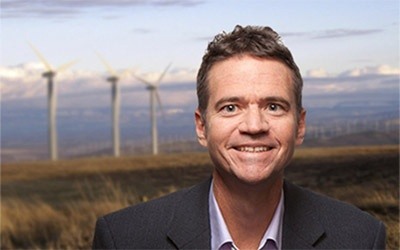Twenty-twenty was a rough year, and 2021 got off to an equally bumpy start. With so much bad news, it’s not surprising we feel a growing sense of weariness, particularly when pondering something as massive and scary as global climate change. To keep from getting too down, especially with Earth Day around the corner, it’s worthwhile to take note of some real progress that’s already been made in curbing U.S. greenhouse gas emissions — along with some exciting trends that should increase the pace.
In 2019, total U.S. energy-related CO2 emissions had fallen 15% since their peak in 2007. This despite our population growing by about 10% and our inflation-adjusted GDP increasing by 20% during the same period. A 15% reduction is, of course, nowhere near where we need to be to avoid the worst of the effects of climate change — but we shouldn’t dismiss it. Additionally, the technologies, policies, and processes that brought about this reduction are accelerating as there is growing acknowledgement among a majority of the population that it’s important to act.
Below is a brief review of encouraging news I’ve seen in each of the major sectors of energy use in the U.S.: transportation, industrial, and buildings, as well as in the electricity generation sector which serves all three.
Industrial (35% of end-use energy) – Increasingly, manufacturers are realizing that implementing sustainability plans and reducing emissions are more than just the responsible thing to do. Investors are seeking out companies that have stated policies and targets for operating responsibly. Nearly a quarter of Fortune 500 companies, including many large manufacturing firms, have already publicly committed to science-based emission reduction targets by 2030, with many committing to 100% carbon-free energy by then.
Buildings (28% of end-use energy) – While there is still a lot of room for improvement, building energy codes are becoming more stringent, and materials, equipment, and installing contractors are improving. Green building rating systems such as LEED have transformed the construction industry, resulting in not only lower energy use, but also in raw materials that take less energy to produce and have less harmful environmental and health impacts. Sensors and controls are becoming cheaper and more reliable, enabling owners and operators to more easily see how their buildings are performing in real time. Many municipalities are mandating benchmarking and progressive performance improvements for their existing building stock. This last fact might be the most important step of all, since existing building area dwarfs that of new and newly-renovated buildings.

Transportation (37% of end-use energy) – Ford and GM have joined other world automakers in unequivocally announcing plans to phase-out gasoline-powered cars as early as the end of this decade. This is an exciting time as we get to reinvent the automobile and there are some really amazing cars and trucks in the works. Electric long-range freight vehicles are also becoming available. While electric vehicles already have 50% or lower source emissions than those using gas and diesel, their emissions will decrease even further as our electrical generation becomes cleaner.
Electricity Generation - Solar and wind energy continue to grow in their percentage of U.S. electricity generation. In 2020, almost 20% of our utility-scale generation was from renewable sources, primarily wind, hydro, and power. Solar Photovoltaics (PV) currently makes up less than 2.5% of the utility generating total (most residential and building-mounted solar isn’t included in this, but solar installations are continuing to accelerate. (See Solar Data Cheat Sheet by SEIA for some upbeat news on the solar industry.) There is still debate about whether we can phase out emissions with wind and solar alone. Fortunately, there are also some promising new designs for safer nuclear reactors, geothermal energy generation, and other technologies. Electric utilities, many of which are historically resistant to emissions reductions, are now committing to significant decarbonization, with dozens,—including Dominion Power—committing to zero carbon electricity by 2050 or sooner.
Our work at Day & Zimmermann has already contributed to many of these trends. As part of Mason & Hanger, D&Z’s Architecture and Engineering practice for buildings, I am proud of the resilient and highly-efficient buildings and renewable energy systems we have designed. I also look forward to the coming opportunities as we change the way we make and use energy.
To be clear, the U.S. and the world are still WAY short of where we need to be. None of the good news mentioned above should be viewed as minimizing the dangers related to climate change and the urgency, with which we need to implement major emissions reductions. But it’s good to know to know that what we’ve done so far has had at least some impact. We just need to ramp it up. As engineers, architects, and contractors it’s our responsibility to make sure this happens. Happy Earth Day.


